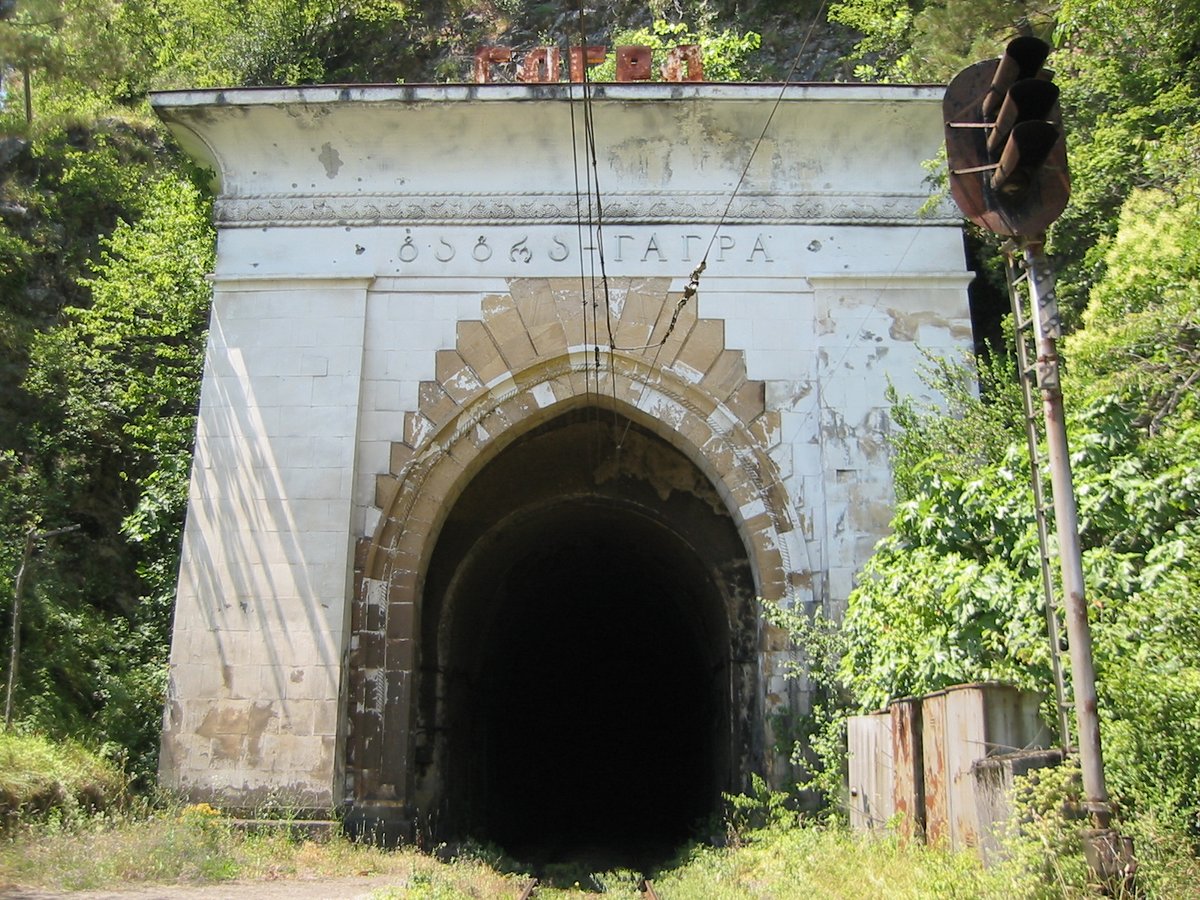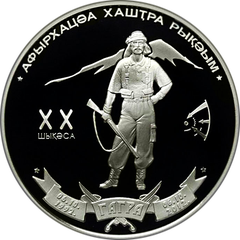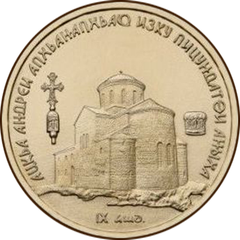
Abaata Gagra, Georgia: Visiting Hours, Tickets, and Historical Sites Guide
Date: 04/07/2025
Introduction: Abaata’s History and Cultural Significance
Situated along the breathtaking Black Sea coast in the historic town of Gagra, Abkhazia (Georgia), Abaata stands as one of the region’s most remarkable heritage complexes. The site comprises the ancient Abaata Fortress and the early medieval Abaata Church (Church of St. Hypatius), offering visitors a deep dive into centuries of architectural, cultural, and spiritual evolution. From its origins as a Greek colony within the Kingdom of Colchis, through Roman and Byzantine rule, Ottoman occupation, Russian imperial expansion, and its heyday as a Soviet resort, Abaata encapsulates the dynamic, multicultural history of the Caucasus. Today, travelers can explore 4th–5th-century fortifications, marvel at the 6th-century basilica-style church, and visit museum exhibits showcasing local artifacts. This guide details Abaata visiting hours, ticketing, accessibility, nearby attractions, and practical travel tips to help you make the most of your journey into Gagra’s storied past (Simple English Wikipedia – Gagra; Spotting History; FromTo Travel).
Table of Contents
- Introduction to Abaata and Gagra Historical Sites
- Early Foundations and Ancient History
- Medieval and Early Modern Periods
- Russian Imperial and Early Resort Era
- Soviet Era: The Rise of the “Soviet Riviera”
- Post-Soviet Turmoil and Contemporary Context
- Architectural and Cultural Landmarks
- Visiting Hours, Tickets, and Accessibility
- Nearby Attractions and Travel Tips
- Special Events and Guided Tours
- Practical Visitor Tips
- Preservation and Future Prospects
- FAQ
- Conclusion
Early Foundations and Ancient History
Abaata’s roots trace back to the era of Greek colonization, when Gagra—then called Triglite—was a trading outpost within the ancient Kingdom of Colchis. The settlement’s location at the intersection of the Black Sea and the Caucasus facilitated trade and cultural exchange. Under Roman rule, Gagra became Nitica, a fortified town frequently contested by the Goths. Byzantine control followed, transforming Gagra into a hub for Venetian and Genoese traders. The earliest known reference to the name “Gagra” appears on a 1308 Venetian map, underscoring its long-standing regional prominence (Simple English Wikipedia – Gagra).
Medieval and Early Modern Periods
By the 16th century, Gagra and Abaata were integrated into the Kingdom of Georgia. The area suffered repeated invasions from the Ottomans, resulting in depopulation and hardship. The Russian Empire’s 1878 victory over the Ottomans ushered in a period of reconstruction, paving the way for the town’s revival (Simple English Wikipedia – Gagra).
Russian Imperial and Early Resort Era
During the late 19th and early 20th centuries, the Russian Empire further developed Gagra’s infrastructure, establishing health resorts and leveraging the area’s favorable climate. This laid the groundwork for Gagra’s emergence as a renowned leisure destination.
Soviet Era: The Rise of the “Soviet Riviera”
In 1919, Lenin nationalized Gagra’s resorts, positioning the city as a premier Soviet holiday destination. During WWII, the area’s sanatoriums treated wounded soldiers, and in the post-war period, Gagra became known as the “Soviet Riviera,” marked by rapid growth and a vibrant tourism industry (Simple English Wikipedia – Gagra).
Post-Soviet Turmoil and Contemporary Context
The collapse of the Soviet Union brought turmoil: the 1992–1993 war between Georgian and Abkhazian forces led to extensive damage, destruction, and displacement. Restoration efforts since 1993 have focused on preserving Abaata’s historical sites despite ongoing political complexities (Simple English Wikipedia – Gagra).
Architectural and Cultural Landmarks
Abaata Fortress
This medieval fortress is a central symbol of Gagra’s strategic significance. Its formidable stone walls and panoramic Black Sea views transport visitors to pivotal moments in the region’s past.
Abaata Church (Church of St. Hypatius)
Dating to the 6th century, Abaata Church exemplifies early medieval basilica architecture typical of the Caucasus. Built from rough stone blocks and featuring a three-nave layout, the church’s design reflects Byzantine influences. Its thick walls, small windows, and cross-topped roof evoke both defensive strength and spiritual reverence (Spotting History; RestGeo).
The church’s modest size fosters an intimate spiritual atmosphere, with natural light filtering in through southern and western windows (OrthoChristian). After a careful 1902 restoration, the church has survived periods of closure and remains a protected Monument of National Significance (Wikipedia).
Other Notable Sites
- Remnants of Roman and Byzantine fortifications
- 19th-century Russian imperial buildings
- Soviet-era sanatoriums and recreational complexes
Abaata Visiting Hours, Tickets, and Accessibility
Fortress & Grounds
- Visiting Hours: Typically open daily from 9:00 to 19:00; hours may extend to 22:00 or vary by season.
- Tickets: Entry to fortress and church grounds is free. Tickets for the Abaata Museum (inside the fortress) cost 100 rubles for adults; children under 7 enter free.
- Museum Hours: 10:00 to 18:00.
Abaata Church
- Visiting Hours: 09:00–18:00 daily. Hours may vary during religious services or special events.
- Tickets: No entrance fee to visit the church.
Accessibility
- Paved paths make most of the site accessible for wheelchair users, though fortress ruins can be uneven.
- The museum is generally accessible; visitors with mobility needs are encouraged to contact staff or local guides in advance.
Getting There
- From Russia: Most travelers enter via the Psou River border crossing near Sochi/Adler. Russian citizens and some other nationalities can cross relatively easily; check current requirements before your trip (exploregeorgia.org).
- From Georgia: Entry from Georgian-controlled areas is currently not permitted for foreign tourists (wander-lush.org).
- By Car: Private vehicles crossing from Russia must comply with insurance and documentation regulations.
- By Public Transport: Seasonal trains and regular minibuses connect Sochi/Adler with Gagra.
Facilities and Amenities
- Dining: The Abaata restaurant serves authentic Abkhaz and Georgian cuisine with sea and park views.
- Accommodation: The onsite Abaata Hotel offers mid-range lodging with modern amenities.
- Parking: Free parking for visitors and hotel guests.
- Restrooms: Available near the main entrance and restaurant.
- Wi-Fi: Free Wi-Fi in hotel and restaurant areas.
Practical Visitor Tips
- Currency: Russian ruble is the primary currency. Credit cards are accepted in some establishments, but cash is preferred for smaller purchases.
- Language: Russian is widely spoken; English is less common.
- Safety: Gagra is generally safe, but political sensitivities remain. Comprehensive travel insurance is recommended (travelerbibles.com).
- Connectivity: Only Russian mobile operators provide coverage; Georgian SIMs do not work.
- What to Bring: Passport, Abkhaz permits, comfortable shoes, modest attire for religious sites, swimsuit, sunscreen, and cash.
Local Etiquette and Cultural Insights
- Respect posted signs and local customs, especially at religious sites.
- Modest dress is expected in churches; women may wish to use headscarves.
- Tipping is appreciated but not obligatory.
- Photography is permitted but discouraged during religious services; always ask before photographing people.
Nearby Attractions
- Gagra Fortress: Adjacent to Abaata, offering further historical exploration.
- Abaata Park: Landscaped park with subtropical plants and fountains.
- Black Sea Beaches: Pebble beaches ideal for swimming and water sports.
- Lake Ritsa: Picturesque mountain lake a short drive away.
- Local Markets: Sample regional produce, honey, and handicrafts.
Special Events and Guided Tours
- Guided tours are available through local operators and the Abaata Hotel, often in Russian and occasionally in English.
- Seasonal cultural festivals and photographic tours highlight regional traditions and panoramic views.
Environmental Considerations
- Practice sustainability: minimize waste, use refillable bottles, and avoid feeding wildlife.
- Dispose of litter responsibly to help preserve the environment (restgeo.com).
Emergency Contacts
- Police: 102
- Medical Assistance: Central Gagra hospital
- Note: No Georgian or Western consular presence; register with your embassy before travel.
Frequently Asked Questions (FAQ)
Q: What are Abaata’s visiting hours?
A: The fortress and park are open from 9:00 to 19:00 (sometimes until 22:00 in summer); the museum is open 10:00–18:00.
Q: Are tickets required?
A: Entry to grounds and church is free; museum tickets cost 100 rubles for adults.
Q: Are guided tours available?
A: Yes, through local agencies and the Abaata Hotel.
Q: Is Abaata accessible for visitors with disabilities?
A: Most public areas are accessible; some historic areas may have uneven terrain.
Q: What language is spoken?
A: Russian predominates; English is less common.
Q: What’s the best time to visit?
A: May to October for the best weather and local events.
Preservation and Future Prospects
Ongoing preservation efforts focus on maintaining the fortress, church, and museum, with an emphasis on sustainable cultural tourism. Despite political challenges, Abaata continues to attract history enthusiasts and travelers eager to experience the Black Sea’s unique heritage (Tourist Places Guide – Abkhazia).
Conclusion
Abaata stands as an enduring symbol of Gagra’s layered history, resilience, and cultural richness. With accessible visiting hours, affordable tickets, and a blend of ancient architecture and natural beauty, Abaata is an unmissable destination for anyone exploring the Black Sea region. Plan ahead, respect local customs, and use this guide to enrich your travel experience in one of the Caucasus’ hidden gems.
Explore More
- Download the Audiala app for interactive maps and guided tours in Abkhazia.
- Follow us on social media for updates and travel inspiration.
References
- Simple English Wikipedia – Gagra
- Spotting History – Gagra Church
- FromTo Travel – Abaata Fortress
- Tourist Places Guide – Abkhazia
- OrthoChristian – Abaata Church History
- RestGeo – Main Attractions of Gagra
- exploregeorgia.org
- wander-lush.org
- travelerbibles.com


